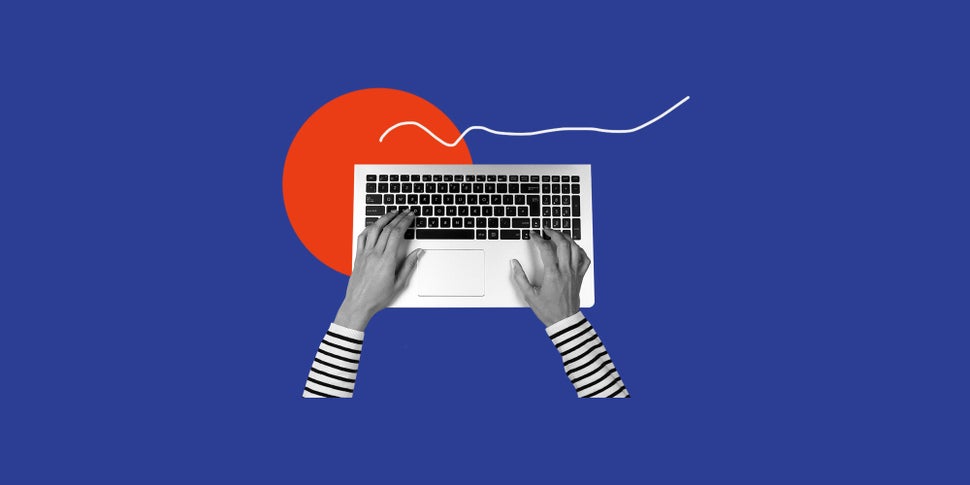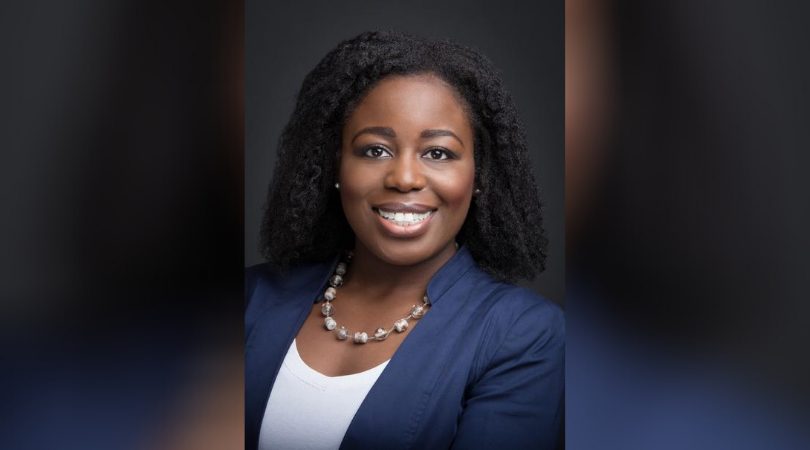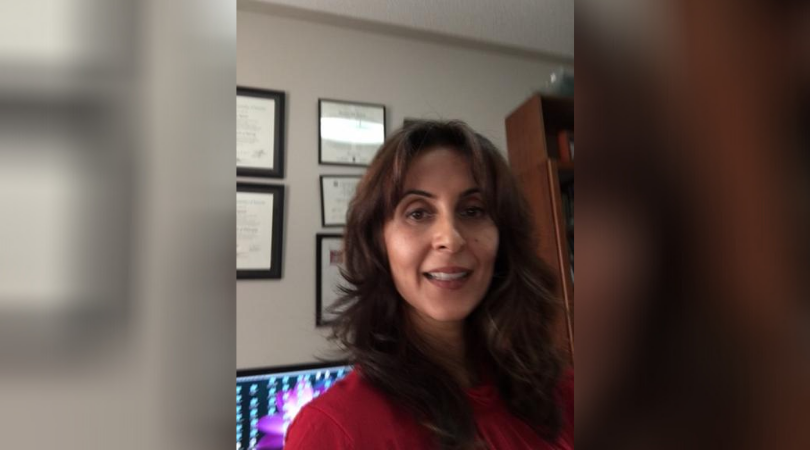This story is part of Learning Curve, a HuffPost Canada series that explores the challenges and opportunities for students, faculty and post-secondary institutions amid the COVID-19 pandemic.
When universities moved online in March in response to the COVID-19 pandemic, it marked the advancement of something students with disabilities have been requesting for years: more accommodations and support.
Third-year York University computer science student Arnab Hossain has Crohn’s disease, an inflammatory bowel disease that can cause severe abdominal pain. He said once or twice a week he usually arrives to class late or has to leave in the middle of a lecture because of the pain. When his winter courses moved online, he was able to watch lectures from his bed, where he was more comfortable.
“This pandemic has really showed some universities are capable, technologically capable, to run courses online and in person,” he told HuffPost Canada. “I think this is going to open up a lot of doors.”

While the move to online learning has been a welcome shift for many, it has also been disappointing to see workplaces and institutions suddenly pivot to offering the same accommodations that people with disabilities have historically asked for and been denied, said Kelly Johnson, the founder of Completely Inclusive, which offers accessibility consulting services.
“It’s kind of really blatant in your face, the fact that companies just didn’t want to, or schools just didn’t want to [help students with disabilities],” she told HuffPost.

A 2018 report from the National Educational Association of Disabled Students and a team of Canadian researchers suggests that although there are good faith efforts to improve accessibility for students with disabilities in post-secondary education, these efforts have lagged behind technological advances.
The number of post-secondary students who have disabilities has “increased tremendously” over the past 30 years, the report says. This can be attributed to an increase of students who have learning disabilities, mental health issues, chronic medical conditions and acquired brain injuries, or who are on the autism spectrum; the number of students who have physical or sensory disabilities has remained “relatively constant,” according to the report.
While none of the past research on the educational experiences of students with disabilities could have predicted a pandemic forcing all students online, it highlighted an issue students now face: the lack of “mainstreaming” of accessible solutions via technology.
Online classes remove barriers for some students
One blind York university student going into her fourth year in the business economics bachelor of arts program said in an email to HuffPost that the move to online learning has been a “blessing.”
She asked to remain anonymous for fear that speaking out would affect her work-study and scholarship applications or acceptance to a graduate program at the university.
Before the pandemic, the student preferred to take online courses because she relies on visual accessibility software to participate in class.
She says online learning has eliminated many of the barriers she usually faces in classes, like not being able to keep up with a professor in a lecture because of the speed of her text-to-speech software and not being provided with accessible materials, despite informing professors and teaching assistants of her accommodations.
“I finally feel I have been given the opportunity to participate in classes without the added stress of overcoming barriers.”
She’s also had issues with not being given priority seating in classes or being locked out if she arrives late after rushing from one class to another using a white stick to navigate.
At home, she can work through lectures at her own pace, and materials are in accessible formats like Microsoft Word or a PDF. She can also use her own accessibility software and hardware at home, instead of relying on volunteer student note-takers at school who provide handwritten notes that may help other students but that she can’t use.
Before the pandemic, York “was not willing to make any concessions to allow students such as myself [to] access in-class lectures online,” the student said.
Now, approaching a semester where she’s taking all online classes, “I finally feel I have been given the opportunity to participate in classes without the added stress of overcoming barriers,” she said.
A York University spokesperson said the university’s Student Accessibility Services office can support students in getting alternate, accessible formats of course material.
The spokesperson also said that before the pandemic, courses designed to be in-person may not have had the option for remote learning, but requests for accommodation were evaluated depending on a students’ needs.
One downside, though, is that York has traditionally charged extra for online courses, she said. She said when she asked why she was told it was because it costs more to have a course online, something she finds “difficult to believe.”
The university isn’t charging extra fees for online courses in the fall semester, and refunded the fees for the summer semester, but will reinstate them in the winter as classes are expected to be offered on-campus again, she said.
The York spokesperson said the university has not yet made a decision on the fees for the winter, and said these fees are regulated under the ministry of colleges and universities’ tuition and ancillary fee framework.
“... students such as myself who rely on online learning ... are continually penalized.”
“It seems students such as myself who rely on online learning to navigate around barriers due to disabilities are continually penalized,” the student said.
She also noted that students who have disabilities at York “are charged the same tuition and fees as other students yet cannot use the same amenities as an able-bodied person.”
The student believes the university should be doing more to ensure students with varying disabilities are supported in online learning. She said no one from accessibility services reached out to her when classes moved online and she would’ve liked to see more institutional support.
The spokesperson said the university sent out a survey to students after courses moved online in March, and has been working with instructors to ensure they have resources to support students with disabilities in online learning.
Accessibility counsellors are reaching out to students “on a regular basis.” The student accessibility office is also holding virtual webinars to help students become familiar with the university’s online learning platform and learn about assistive technologies they might be helpful to them.
Some students need access to assistive technology
It’s important for professors to talk to students to find out about their needs, since every student with a disability has unique needs, said Eyra Abraham, founder of Lisnen, an AI company that assists people who are Deaf and hard of hearing.

She said there are a number of challenges that Deaf students face with online learning. Video programs like Zoom don’t have automatic closed captioning, she notes. While some universities have been able to provide it for lectures, for group work that takes place on video calls, students may be on their own.
Abraham noted some students have found their own “hacks” like using an auto-transcription service on their phone to transcribe what their peers are saying on the video call.
Some students who are visually impaired or who have a learning disability may use a screen reader — a program that can read out what is on a computer screen — but they may encounter difficulties depending on the type of document or software they’re using.
Many websites have accessibility issues, Abraham said. For a website to be accessible, it needs to have had user feedback from people who have disabilities.
WATCH: Will Canadians with disabilities see a top-up during the COVID-19 crisis? Story continues below.
There’s also the issue of getting access to needed hardware and software to begin with. Not every student has access to a computer or phone, and students who use American Sign Language need their hands to sign, making it hard to hold a phone.
Note-taking programs used for in-person classes also may not be available to students at home. In addition, some students may lack a device to stream their computer audio directly to their hearing aids, if they wear them, Abraham added.
Students may think that because they’re not in a physical school environment, they have to get all their own learning materials. But under accessibility laws, employers and organizations are required to provide “reasonable accommodation,” Abraham said. While what that means isn’t always clear, she said she believes universities have a duty to provide accommodation for students, which includes access to the often-expensive technology.
“In exchange for tuition fees, they are providing a service and one that requires each student full access to knowledge and resources without any barrier,” she said.
What needs to happen in September and beyond?
Starting a new semester in September — the first semester of college or university, for some students — means there’s no “template” for a student to get acquainted with professors and explain their needs. Some students may also be used to their parents advocating for them, Abraham said.
“The university needs to put a lot of extra time and resources into reach[ing] out to the students,” she said. Because not all students self-disclose their disability, she suggests having standard material as part of the university’s “welcome package” that includes information on specific scenarios that students with disabilities may face — not being able to hear their teachers on a video call, for example — and the resources and solutions available.
“... the historical reality is that the more marginalized the population, the lower priority their problems tend to be.”
- Katherine Breward
Often, students who are struggling find out about the resources available to them too late in their schooling experience, especially if they require a certain grade point average to maintain a scholarship in their first year. “You want to have that information up front so you can maintain … your learning,” she said. “That’s the whole point of being there.”
Johnson suggested that instead of individual professors trying to make their content more accessible, disability offices — which already exist in many, if not all, post-secondary institutions — take on this responsibility. Professors could submit material to the disability office, who could hire students who have disabilities to test the formatted material for accessibility before it’s sent back to the professor.
She said that ultimately, if we want to see these accommodations continue after the pandemic, schools first have to see the value in accessible schooling. Professors also need more support to make their courses accessible.
Iris Epstein, an assistant professor at York University’s School of Nursing, echoed this.

In 2019, along with colleagues, Epstein created an online toolbox of resources for students to shoot videos with their smartphones for class, with tutorials ranging from basic to advanced editing. Videos are the “future of teaching,” she said, with benefits ranging from teaching hands-on skills to allowing students to replay lecture content. Many students who have disabilities were part of the process of creating the toolkit, she said, and showed how they can lead their own learning.
But while teachers can learn a lot from students, it’s also important not to burden students by expecting them to plan their own learning. Ultimately institutions must be responsible for supporting instructors and faculty, Epstein said.
Katherine Breward, an associate professor at the University of Winnipeg who studies disability accommodation, said universities need to make conscious efforts to survey students who have disabilities to gain a better understanding of their experiences. But making these accommodations last beyond the pandemic is also a matter of being “heard through the noise” of other students raising issues with online learning, she said.
“When there’s a lot of high-priority problems, the historical reality is that the more marginalized the population, the lower priority their problems tend to be,” she said.